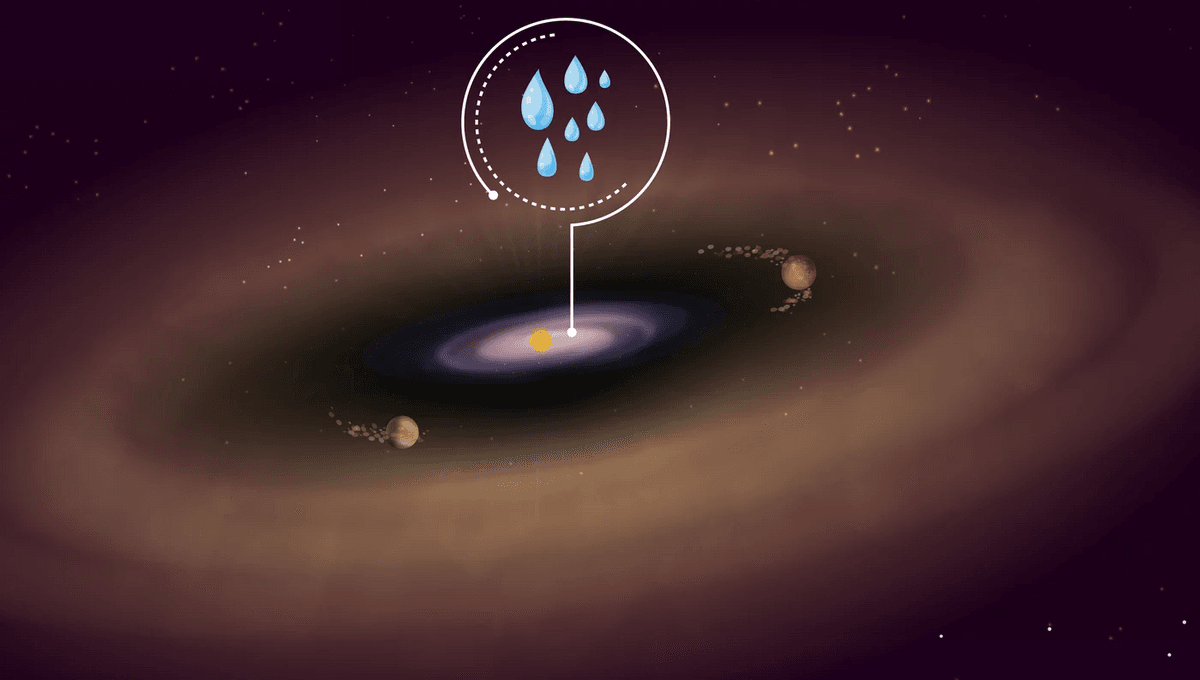
Astronomers report the discovery of water in the terrestrial planet-forming zone of nearby star system PDS 70. The observations are an important stepping stone in understanding how planets like Earth formed and where its water – that sustains all life here – came from.
PDS 70 is located 400 light-years away. It has at least two gas giant planets and recent observations suggest that a third planet might be sharing the orbit of one of these two giants. The candidate object might be the first-ever example of a co-orbital planet. But these worlds are further out than Uranus.
To study where rocky planets formed, researchers used JWST to look much deeper into the system. In the innermost part, they discovered that within a dusty rocky disc, there is water vapor. Sizzling at 330 °C (626 °F), the water vapor is present in the same region where Mercury, Venus, Earth, and Mars are in the solar system.
“We now may have found evidence water could also serve as one of the initial ingredients of rocky planets and be available at birth,” lead author Dr Giulia Perotti, an astronomer at the Max Planck Institute for Astronomy (MPIA) in Heidelberg, said in a statement.
The disc of PDS 70 is 5.4 million years old, definitely among the oldest discs that can be studied. Over time, the gas and dust that make up these discs are either broken apart by starlight, dissipated by stellar radiation or stellar wind, or they can accumulate into planets. Previous studies had failed to detect water in these older discs, but using the mid-infrared instrument (MIRI) on JWST they were able to see the signal.
“This discovery is extremely exciting, as it probes the region where rocky planets similar to Earth typically form,” MPIA Director and co-author Thomas Henning pointed out.
Henning is the principal investigator of the MINDS (MIRI Mid-Infrared Disk Survey) program. MINDS has guaranteed time on JWST to study young planetary discs. Future work will show if PDS 70 is an exception or if it is common for discs to have water in them.
Regardless of what scenario ends up being correct, the team needs to explain how this disc has water. Water is easily broken apart by the ultraviolet light of a newborn star, so how did it survive? One option is that the nebula from which the star system formed was rich in water, and some of it survived shielded by gas and dust.
Another scenario is that the water formed and froze in the outer disc, beyond the two confirmed planets, and it has been flowing inwards. There, the ice sublimates into water vapor that can be detected.
“The truth probably lies in a combination of all those options,” explained Perotti. “Still, it is likely that one mechanism plays a decisive role in sustaining the water reservoir of the PDS 70 disk. The future task will be to find out which one it is.”
Detailed observations of the inner star system are one of the many scientific objectives astronomers teased us about when we asked about the upcoming science from JWST for our exclusive feature.
The study is published in the journal Nature.
Source Link: First Evidence Of Water In The Innermost Part Of A Newborn Star System